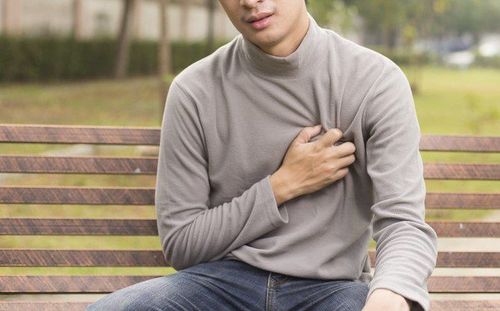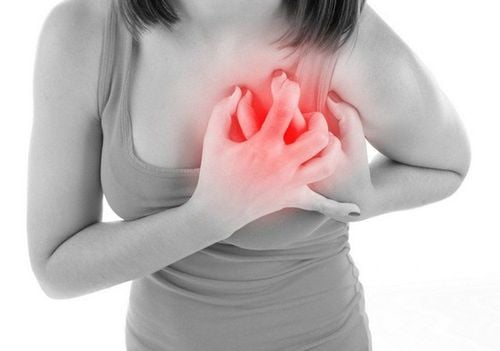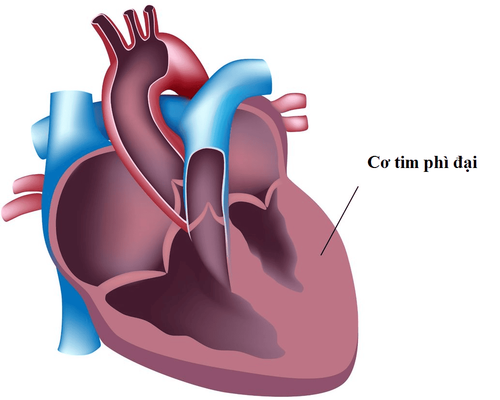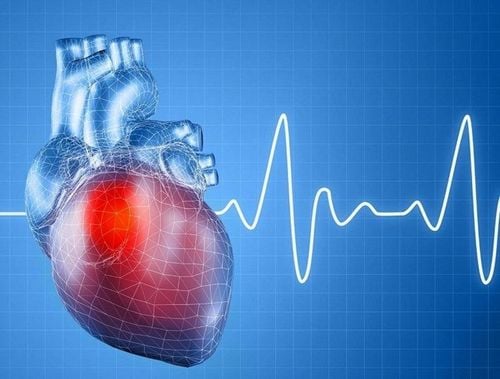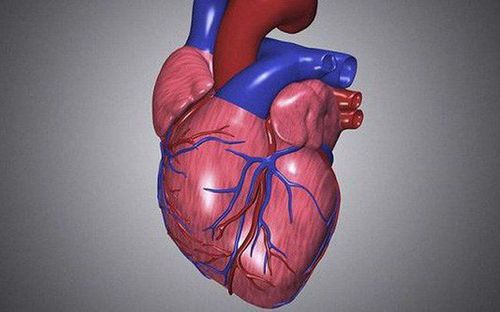This is an automatically translated article.
Article written by Master, Doctor Vu Thi Tuyet Mai - Cardiologist - Cardiovascular Center - Vinmec Central Park International General Hospital.
Sudden cardiac death (SCD) refers to a sudden, unexpected death due to loss of heart function (sudden cardiac arrest). Sudden cardiac death is the largest natural cause of death in the United States, causing approximately 325,000 deaths among U.S. adults each year. Sudden cardiac death causes half of all heart-related deaths. Sudden cardiac death occurs most often in adults between the ages of 30 and mid 40 and affects men twice as often as women. This condition is rare in children, affecting only 1 to 2 in 100,000 children each year.
1. How is sudden cardiac arrest different from a heart attack?
Sudden cardiac arrest is not a heart attack (myocardial infarction). Heart attacks happen when there is a blockage in one or more blood vessels that feed the heart, also called coronary arteries. This condition causes the heart muscle not to receive enough blood supply and leads to damage to the heart muscle cells.
In contrast, sudden cardiac arrest occurs when the heart's electrical conduction system malfunctions and suddenly becomes very abnormal. The heart beats dangerously fast. The heart may not beat in rhythm but vibrate (ventricular fibrillation) and not supply enough blood to the organs. During the first few minutes, blood flow to the brain will drop so drastically that a person will pass out. If not treated in time, it can lead to death.
Urgent treatment includes cardiopulmonary resuscitation (CPR) and defibrillation. CPR helps keep enough oxygen in the lungs and carried to the brain until a normal heart rhythm is restored with an electrical shock to the chest wall (defibrillation). Portable defibrillators used by emergency personnel or commonly placed in public (AEDs) can help save lives.
2. What are the symptoms of sudden cardiac arrest?
Symptoms may be a feeling of heart palpitations or dizziness, which is considered a warning sign that a dangerous arrhythmia has begun. However, more than half of sudden cardiac arrests occur without warning symptoms.
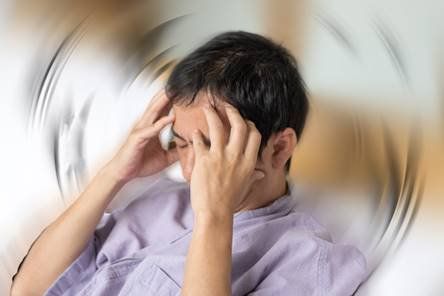
3. What causes sudden cardiac death?
Most sudden cardiac deaths are caused by arrhythmias. The most common life-threatening arrhythmia is ventricular fibrillation. This is an erratic, out of rhythm, disorganized electrical impulse from the ventricles (lower chambers of the heart). When this happens, the heart cannot pump blood and death occurs within minutes if left untreated.
4. What are the risk factors for sudden cardiac arrest?
There are many factors that can increase the risk of sudden cardiac arrest and sudden cardiac death.
The top two risk factors include:
History of myocardial infarction (75% of sudden cardiac deaths are related to a previous heart attack), especially in the first 6 months after the infarction heart muscle. Coronary artery disease (80% of sudden cardiac deaths are related to it) - Risk factors for coronary artery disease include: Smoking, family history of cardiovascular disease, high cholesterol , hypertension, diabetes. Other risk factors include:
Ejection fraction less than 40% (EF), associated with ventricular tachycardia. Previous history of cardiac arrest was lifesaving. Family history of sudden cardiac arrest or sudden cardiac death. Personal or family history of cardiac arrhythmias, such as long QT syndrome, Wolff-Parkinson-White syndrome, very slow heart rate, or heart block. Ventricular tachycardia or ventricular fibrillation after a heart attack. History of congenital heart defects or vascular abnormalities. History of syncope (unknown syncope episodes). Heart failure: A condition where the pumping power of the heart is weaker than normal. Patients with heart failure are 6 to 9 times more likely to develop ventricular arrhythmias than the general population, which can lead to sudden cardiac arrest. Dilated cardiomyopathy (accounting for 10% of sudden cardiac death): Decreased pumping ability of the heart due to dilated and weakened left ventricle. Hypertrophic cardiomyopathy: Thickening of the heart muscle specifically affects the ventricles. Significant changes in blood potassium and magnesium levels (possibly due to diuretic use), even in the absence of heart disease. Fat. Diabetes. Abuse of stimulants. Taking “antiarrhythmic” medications can increase your risk of life-threatening arrhythmias. Sudden cardiac death is rare in athletes but not impossible. In the young population, sudden death is often due to congenital heart defects, occurring during team sports; prevalence is about 1 in 100,000 to 1 in 300,000 athletes and is common in men. Meanwhile, in older athletes (over the age of 35), the cause is often related to coronary heart disease and often occurs with jogging, the incidence is 1 in 15,000 runners and 1 in 50,000 marathoners. .
The American Heart Association recommends cardiovascular screening for high school and college athletes. Screening should be repeated every 2 years. Men aged 40 years and women aged 50 years and older should have exercise testing to assess cardiovascular risk. If heart disease is diagnosed or suspected, athletes should be referred to a cardiologist for treatment guidance before engaging in physical activity
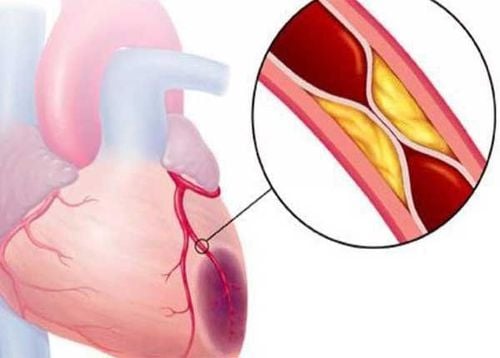
5. How to treat sudden cardiac arrest
Sudden cardiac arrest can be treated and reversed but must be treated immediately. Survival rates can be as high as 90% if treatment is started within the first minutes after sudden cardiac arrest. This rate will decrease by about 10% after every minute of delay in emergency. Survivors usually have a good prognosis afterward.
If you witness someone having a sudden cardiac arrest, call 911 and perform CPR. If done correctly, CPR can save a person's life because it helps keep blood and oxygen circulating in the body until help arrives.
Defibrillation with an AED machine is considered the best chance to save the patient, the machine may be available in some public areas. The faster the patient is defibrillated, the better the chance of survival. CPR plus defibrillation is considered the primary life-saving measure.
6. Can sudden cardiac arrest be prevented?
If you have any of the risk factors listed above, you should have regular check-ups and follow-up with a cardiologist for in-depth evaluation tests,+ and timely intervention .
Implantable defibrillator (ICD) For patients at high risk of sudden death or survival after cardiac arrest, prophylaxis with a defibrillator may be possible. An ICD is a small machine similar to a pacemaker, implanted under the skin. It monitors, detects and treats tachyarrhythmias by emitting an electrical energy (a small but powerful shock) to the heart muscle cells to return the heart rate to a normal rhythm. This data will be recorded and the doctor will check to adjust the operating mode of the machine to suit the patient.
Coronary interventional procedure or surgery For patients with coronary artery disease, coronary angiography and angioplasty or stenting, or bypass surgery, may be needed to improve blood flow to the myocardium, reduce the risk of sudden death. For patients with hypertrophic cardiomyopathy or congenital heart defects, surgery is needed to correct structural cardiac abnormalities. In addition, catheter ablation can completely treat arrhythmias caused by accessory pathways, re-entry loops, old myocardial infarction scars,...
Education family members If a family member is at risk of sudden cardiac death, family members need to understand the importance of the disease and the need for quick, timely emergency care, learn how to do it. Give artificial respiration and call for help in an emergency.
Besides, lifestyle changes are also very important, including: Quit smoking.
Lose weight if overweight.
Exercise regularly.
Follow a low-fat, low-salt and starchy diet.
Manage diabetes, cholesterol, and blood pressure.
If there are risk factors for sudden cardiac death, consult a cardiologist to prevent the event early. Currently, the Cardiovascular Center of Vinmec Times City Hospital is making efforts every day to promote the improvement of the quality of treatment of cardiovascular diseases, building specialized cardiovascular units with the help of universities. leading universities and hospitals in the world. If you have cardiovascular risk factors, sign up for the Cardiovascular Package at Vinmec today.
Please dial HOTLINE for more information or register for an appointment HERE. Download MyVinmec app to make appointments faster and to manage your bookings easily.





